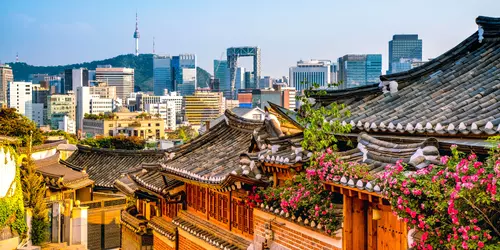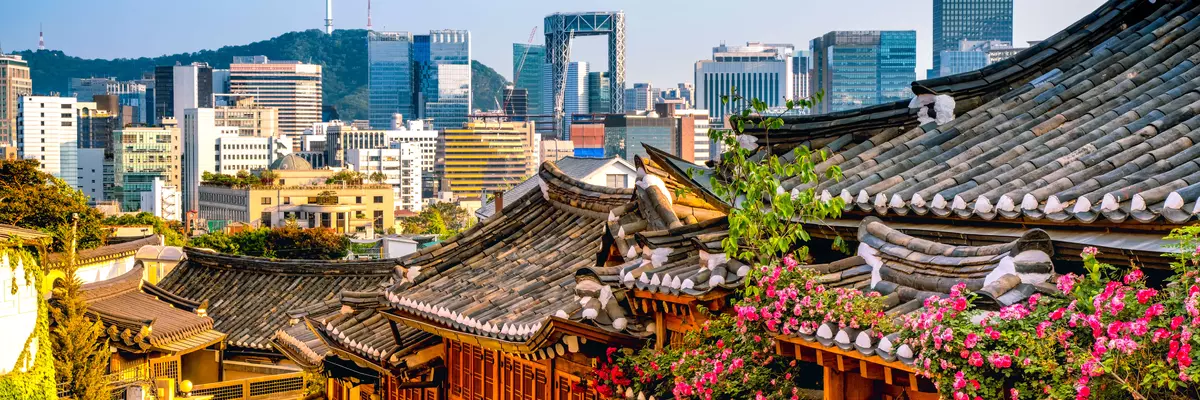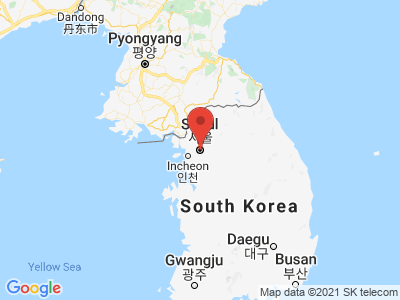Climate Table Seoul
Jan | Feb | Mar | Apr | May | Jun | Jul | Aug | Sep | Oct | Nov | Dec | |
|---|---|---|---|---|---|---|---|---|---|---|---|---|
| Max. Temperature | 1° | 3° | 9° | 17° | 23° | 26° | 29° | 30° | 26° | 20° | 11° | 4° |
| Min. Temperature | -7° | -5° | 0° | 7° | 12° | 14° | 22° | 22° | 16° | 9° | 2° | -4° |
| Sun Hours | 5 | 6 | 6 | 7 | 7 | 6 | 4 | 5 | 6 | 7 | 5 | 5 |
| Water Temperature | 5° | 4° | 4° | 8° | 10° | 18° | 21° | 24° | 21° | 18° | 13° | 7° |
| Rain Days | 3 | 3 | 6 | 6 | 7 | 9 | 14 | 10 | 7 | 5 | 5 | 5 |
The climate year of Seoul
The South Korean capital Seoul is home to about ten million people on a total area of no more than 605.52 km², making it one of the most densely populated capitals in the world. Located not far from the border with North Korea, Seoul is considered the political, cultural, military and culinary center of South Korea. Climatically, the metropolis on the lower reaches of the Han River belongs to the temperate zone with attributes of a subtropical climate and an annual average temperature of about 12.2 degrees Celsius. Due to the monsoon, which also occurs in Seoul, the total amount of precipitation from January to December is beyond the mark of 1,300mm and thus significantly higher than in most German cities.
General information about Seoul
Seoul is considered a tourist highlight on the Asian continent and in the East Asian region. An incredible number of attractions await visitors to the mega metropolis. Particularly noteworthy sights are the National Museum and the Gangnam-gu district. Also very popular are the People's Museum and Changdeokgung, which is also the landmark of the attractive city. Other attractions worth visiting in Seoul are the Jongmyo and the Olympic site of the capital of South Korea. By the way, there are a lot of accommodations in Seoul, which are comparable in quality to those in Europe, including the price.
Tourism Seoul
Seoul always knows the extremes in terms of its climate. Cold winter months and hot summers as well as a heavy rainy season characterize the year in the metropolis. Seoul has a humid continental or subtropical gait climate with characteristics that fit both climates. From November to May, the climate is more continental, while the warmer months belong more to the subtropical climate with elements of a tropical wet and dry climate. Summers are generally hot and humid, the latter due to the East Asian monsoon that prevails from June to September. August is the warmest month, with an average temperature of 22.4 to 29.6 degrees Celsius, although higher temperatures are not uncommon. Winters in Seoul are often cold, with an average temperature of -5.9 to 1.5 degrees Celsius in January. They are also generally much drier than summers, with an average of 28 days of snow per year. In some years, temperatures even go down to below -10.0 degrees Celsius or even 15.0 degrees Celsius, but this is rare.


